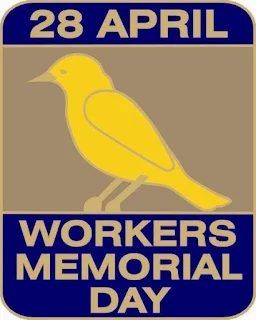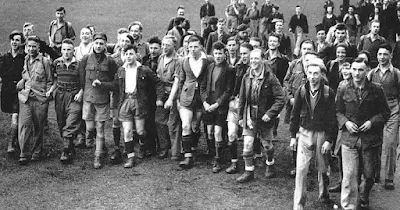
Today World Press Freedom Day provides an opportunity for people around the world to celebrate the fundamental human right to freedom of expression. Every day, journalists around the world face the threat of intimidation, censorship, imprisonment and violence, including torture, for their efforts to report on human rights violations.
The press acts as a medium of communication between the government and the people. The free press has a huge responsibility of reporting the truth and shaping people's opinions. Hence to mark the importance of the press, World Press Freedom Day is celebrated every year.
World Press Freedom Day popularly known as World Press Day is one of the calendar events planned, organised and promoted by the United Nations, observed annually on May 3.
The day is celebrated to raise awareness regarding the importance of freedom of the press. The day is reflection among media professionals about issues of press freedom and professional ethics.
"A free press can, of course, be good or bad, but, most certainly without freedom, the press will never be anything but bad." - Albert Camus
May 3 the World Press Freedom Day is a day of support for media and the reporters right to hold the powerful to account, It is also a day of remembrance for those journalists who lost their lives in the pursuit of a story. As per UNESCO, on May 3, national and local celebrations for World Press Freedom Day will take place around the world, which includes online debates and workshops.
As we all know that the entire world is going through COVID-19 pandemic, this year the theme of world press freedom day 2020 is Journalism without Fear or Favour. The UN Secretary-General António Guterres, in a statement, gave a message to the entire world, saying-
"As the [COVID-19] pandemic spreads, it has also given rise to a second pandemic of misinformation, from harmful health advice to wild conspiracy theories. The press provides the antidote: verified, scientific, fact-based news and analysis". -UN Secretary-General António Guterres
World Press Freedom Day acts as a reminder to governments of the need to respect their commitment to press freedom. That the importance of a free press in a functioning and safe society and serves to commemorate the journalists who have lost their lives in support of free press. In a time when media coverage is prone to fear-mongering and sensationalism, taking the time to appreciate and seek out journalism with integrity has never been more important. Freedom of expression is a fundamental human right as stated in Article 19 of the Universal Declaration of Human Rights.
Apart from the theme of world press freedom day in 2020 Journalism without Fear or Favour, there are also certain sub-themes this year which include.
1. Safety of Women and Men Journalists and Media Workers
2.Independent and Professional Journalism free from Political and Commercial Influence
3. Gender Equality in All Aspect of the Media
Media Worldwide is facing crises on multiple fronts, exacerbated by the COVID19 pandemic. Reporters without Borders released its 2020 World Press Freedom Index on April 21st, noting that the Coronavirus is being used by authoritarian governments to implement “shock doctrine” measures that would be impossible in normal times.
The index shows a “clear correlation between suppression of media freedom in response to the Coronavirus pandemic, and a country’s ranking in the Index.” Of the 180 countries and territories in the index, Iran (ranked at 173) censored their Coronavirus outbreaks extensively. Iraq, at 162, punished Reuters for an article that questioned official pandemic figures, and Hungary (ranked at 89) has just passed a coercive Coronavirus Law.
The long-term risks of suppressing press freedoms have been exposed by the pandemic. As the death toll mounts amidst an economic crisis of unprecedented proportions, promoting transparent reporting is a global necessity. Yet, several countries stand accused of acting too late in warning the world about the timing and extent of the threat.
The World Press Freedom Index illustrates the oppression of journalists from North to South and a pandemic in its own right seems to have fomented.
There are currently 231 journalists imprisoned around the world, and since the start of the year, at least 10 have been murdered because of their activities as journalists.Iin Myanmar, Voice of Myanmar’s editor was arrested recently and charged with terrorism for interviewing a representative of the Arakan Army, a rebel group fighting for regional autonomy.
Even the president of the world’s most powerful democracy has described the press as “the enemy of the people.”
Ultimately, the freedom of the press can only be guaranteed by a coordinated global effort, public awareness and a focus on the long-term advantages of a more critical world.
In the midst of the rising pandemic of misinformation - may today remind us of how vital press freedom is in ensuring that people have access to verified, fact-based, and unbiased info, both on or offline.
Also to mark World Press Freedom Day , the One
Free Press coalition that stands up for journalists under attack for pursuing the truth worldwide.
has called for the immediate release of all
imprisoned journalists amid increasing threats to press freedom
worldwide during the coronavirus pandemic.
Each month, the coalition, which comprises prominent news organisations and publishers, brings
to the public's attention the 10 "most urgent" cases of journalists
whose freedoms are being suppressed or whose cases are seeking justice.
Throughout the years, the campaign has
highlighted the plight of Jamal Khashoggi, a Saudi journalist who was
killed inside the kingdom's consulate in Istanbul in 2018, as well as
Mahmoud Hussein, an Al Jazeera journalist who has been held without any
formal charges in Egypt since December 2016.At least half of the journalists on the latest list published on May 1 are currently behind bars and at heightened risk of exposure to the coronavirus.
Here is a link to the full list https://www.onefreepresscoalition.com/list
Finally on this occasion, I would once again like to draw attention to the case of Julian Assange, a journalist persecuted for doing his job, who has become a symbol of the right to information in the eyes of a growing international public opinion.
In April 2019, shortly after his arrest at the Ecuadorian embassy in London, the United States, seeking his extradition, announced 18 charges against him, including 17 related to espionage for which he would face up to 170 years in prison.
Attacking a journalist by equating his work with espionage is a real threat to press freedom. For if Assange is extradited, he will be convicted and with him the right of investigative journalists to publish freely.
Julian Assange’s health is currently very weakened as a result of the deleterious effects of prolonged psychological torture on him: cognitive and neurological deficiencies, altered thought processes, permanent anxiety, agitation, lack of concentration and coordination, insomnia, accompanied by feelings of total arbitrariness, loss of control and powerlessness, despair with an acute risk of suicide.
However, on Monday 27 April 2020, supported by the prosecution because of the current health situation, the lawyers defending Julian Assange finally obtained from the Westminster Magistrates Court an adjournment of the second part of his previously announced extradition trial for 18 May. The parties will meet again on 4 May to agree on a new date, either in July or November.
This postponement is good news for the preparation of the defense, but it should not, however, be allowed to prolong Julian Assange’s imprisonment any further, since he has not committed or been prosecuted for any crime, if it had to be reminded again, and is therefore imprisoned in London only pending these proceedings, his life being more than ever at risk in the high-security prison of Belmarsh, which is hit by the covid-19 epidemic.This situation further stimulates the determination to have him released immediately.
On this World Press Freedom Day, lets express our support for Julian Assange and join the call for his immediate release, because.one of the hallmarks of repression anywhere is a sustained attack on journalism.
"Freedom of the Press, if it means anything at all, means the freedom to criticize and oppose." - George Orwell.













